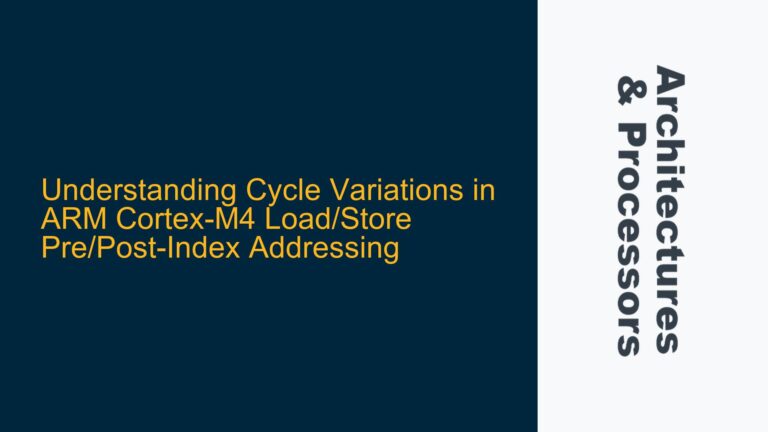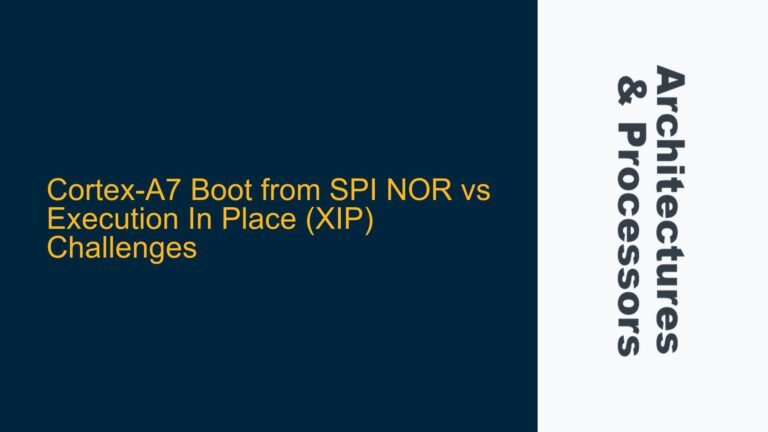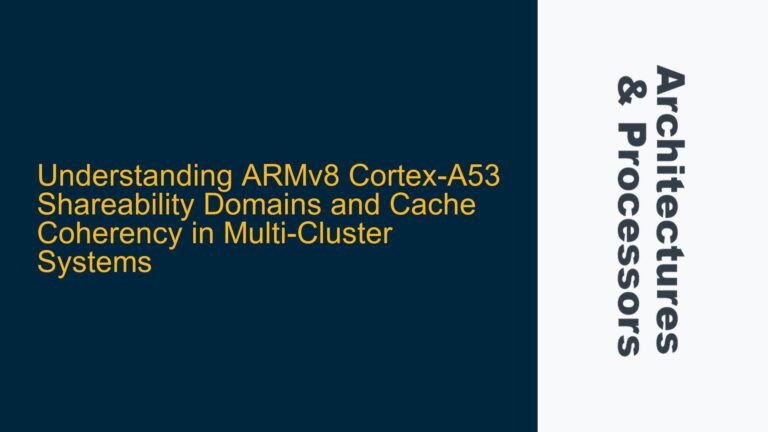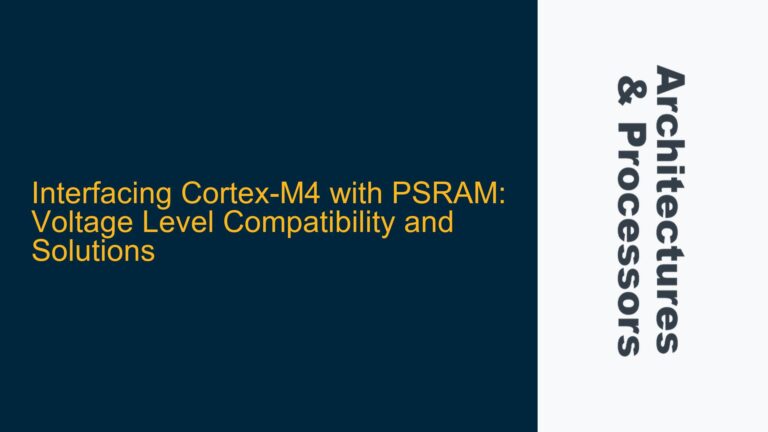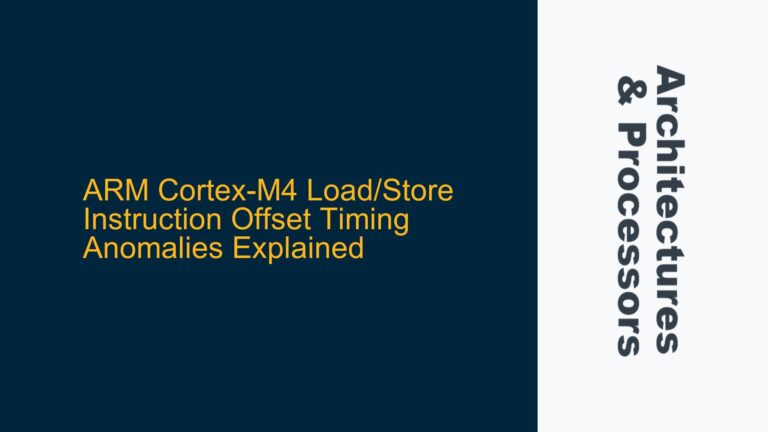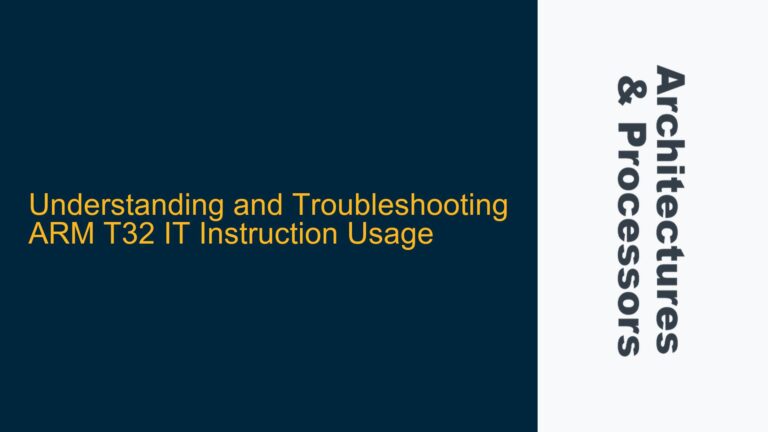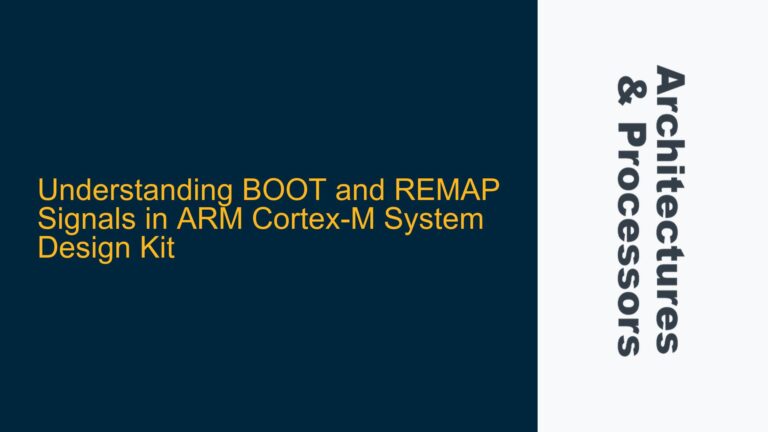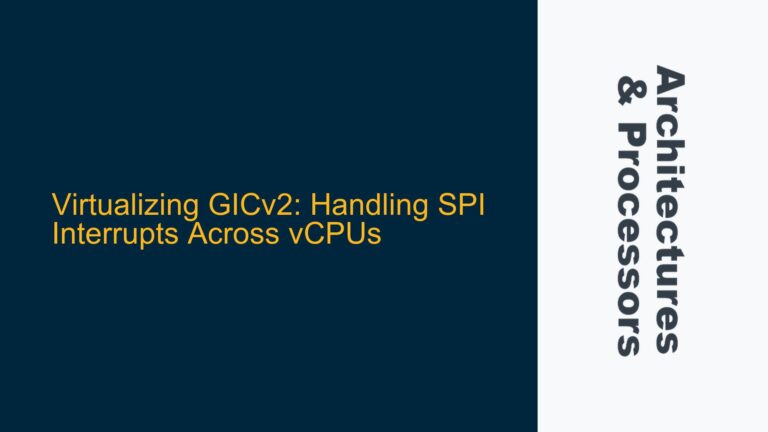Cycle Variations in ARM Cortex-M4 Load/Store Pre/Post-Index Addressing
ARM Cortex-M4 Load/Store Instruction Cycle Variations in Pre/Post-Index Addressing Modes The ARM Cortex-M4 processor, a widely used microcontroller core, employs load and store instructions to move data between memory and registers. These instructions support various addressing modes, including pre-index and post-index addressing. Pre-index addressing calculates the memory address by adding an offset to the base…
